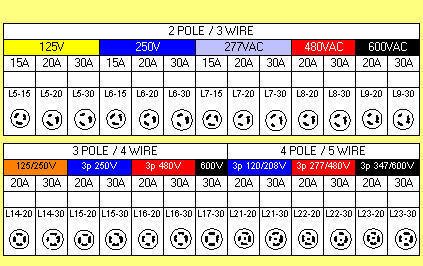Everyone needs to realize that the voltage/amperage numbers you see on a plug or cord cap only indicate what that plug or cord cap is rated for, not what voltage or amperage is available to you when you plug into said cord cap, plug or receptacle. I have seen instances of 50 amp cord caps rated for 250 volts wired onto cords rated 20 amps and connected to 120 volt breakers. It is imperative that you know the requirements of your electrical system, voltage and amperage, and match your cords and cord caps to those requirements. Also, it would help to check voltage at the receptacle you are plugging into before you connect. If it has a three prong configuration, it is probably 120 volt, hot, neutral and ground. If it is a four prong configuration, it is 208 to 240 volt, two hot legs, a neutral and a ground. You would measure 208 to 240 volts between the two hot legs, approximately 120 volts between a hot leg to neutral, or hot leg to ground. From what I have seen, most boat AC systems will be single phase, 240 volt, which means two hot legs, measuring 240 volts reading hot leg to hot leg, a neutral leg, measuring 120 volts either hot leg to neutral, and a ground, measuring 120 volts either hot leg to ground. If you are familiar with your boat's electrical system, you can make informed decision concerning adapters when plugging into shore power.




